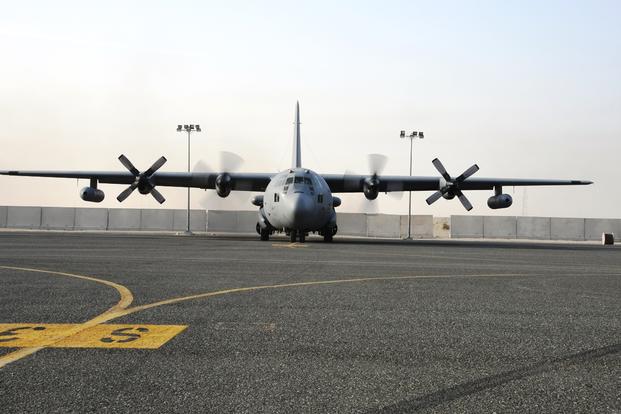The Air Force will begin a concept of operations study that will explore how to best dominate the electronic warfare spectrum, an Air Force general said Tuesday.
"We've started our next enterprise capability collaboration team, what we call as ECCT," said Gen. Stephen Wilson, Air Force vice chief of staff at the Pentagon.
Wilson said the first ECCT focused on the Air Superiority 2030 study; the second, multi-domain command and control.
"The third one we're going to focus on electronic warfare," the general said, met by applause from the EW community during the Association of Old Crows' annual International Symposium & Convention in Washington, D.C.
Related:
- Air Force Taps L3 to Develop Future EC-X Compass Call on Gulfstream 550
- Airmen Fighting ISIS Talk Future Electronic Attack Aircraft EC-X
- Army Weapons Tests on the Fly in Effort to Win Race Against Russia
ECCT teams focus on materiel and non-materiel solutions, leveraging technologies and experimentation as a means to identify and fill capability gaps in the future fight.
"I think it's long overdue...so we're going to put together this team within...a year to 15 months, and work its way through it," Wilson said.
Wilson's announcement follows a prediction from Air Combat Commander Gen. Mike Holmes who last week said it was likely the service would take up an EW ECCT.
The news of the latest study comes at a time when the service wants to beef up its electronic warfare and attack platforms.
In September, the Air Force awarded a contract to L3 for the Compass Call re-host program to replace the aging EC-130H fleet.
"After their analysis and sharing that with the program office, L3 has decided to use the Gulfstream 550 Airborne Early Warning (AEW) aircraft as the new platform," spokeswoman Ann Stefanek said in a statement at the time. "This new Compass Call platform is being referred to as EC-X," she said.
The EC-X will replace the Air Force's aging fleet of modified C-130s made by Lockheed Martin Corp. that carry electronic jamming equipment designed to thwart an adversary's command-and-control communications. L-3 Communications, now L3 Technologies, is the sole aircraft integration and depot maintenance contractor, while BAE Systems secures the mission equipment.
Contested Airspace
Even with better hardware on board, will the new EC-X survive in a contested environment?
Wilson said the service is "broadening that examining" going forward in the future platform, but did not specify how.
"As we look to the future, where the future conflict is going...we [have to] look at a capability that will work through" the uncontested, contested and highly-contested environments, Wilson said.
It's the challenge the service faces to develop new programs rapidly and stay ahead of threats while giving utmost scrutiny to how a program develops.
"It's really easy to do things that are new-old: take the same thing I did before and make it a little bit better, more efficient, but do it in the same way. [But] we also need to look is there ways we do it differently? New-new? New ways to be able to work [across the spectrum]," he said.
"Those are some of the thought processes as we try to develop capability...at the speed of relevance," Wilson said.
Whether or not cyber will play a role in the ECCT study, Wilson said, "We haven't made up our mind yet."
"There's a natural, symbiotic relationship, so how do we look at both? But we're not sure," he said.










